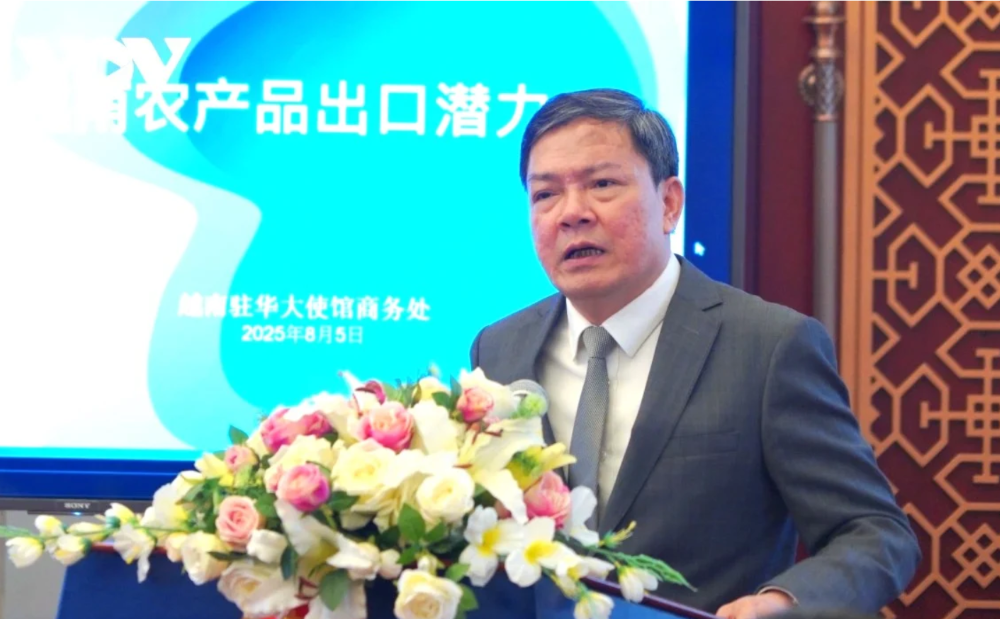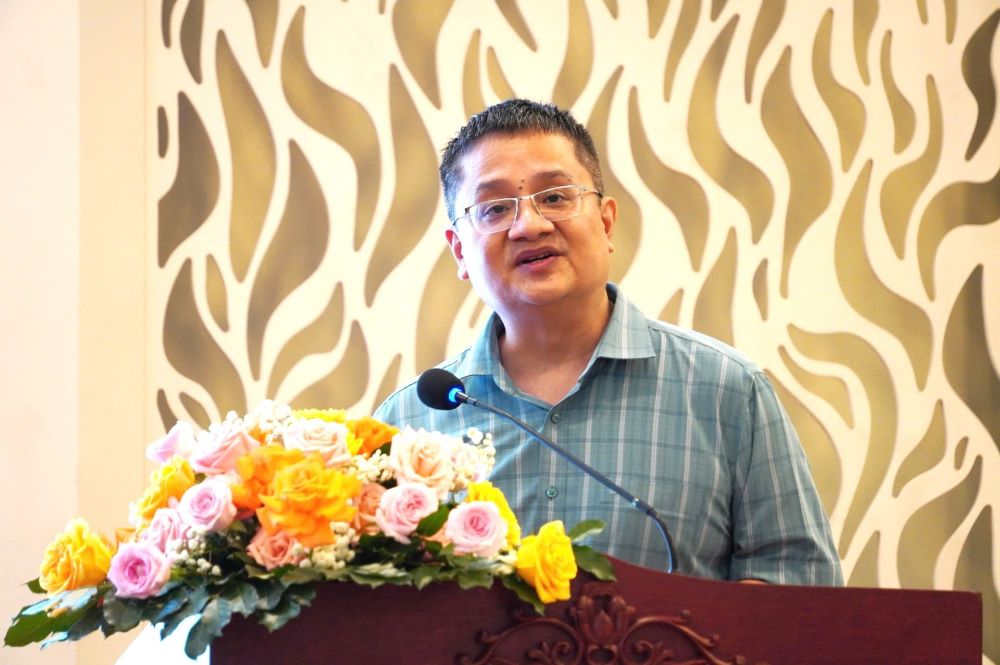
On August 12, 2025, in Ho Chi Minh City, Acting Minister of Agriculture and Environment Trần Đức Thắng and Deputy Minister Trần Thanh Nam chaired the conference “Promoting Agricultural, Forestry, and Fishery Exports in 2025.”
In his opening remarks, Deputy Minister Trần Thanh Nam stated that the agricultural sector’s production value increased by over 3.2% in 2024 and by more than 3.8% in just the first half of 2025. According to assigned targets, the sector must achieve a growth rate of 4% or higher. To meet this goal, the Minister has assigned deputy ministers to directly work with localities, providing coordinated support under the newly implemented two-tier government model, in order to promptly address challenges.

MAINTAINING KEY MARKETS
Regarding exports, Deputy Minister Nam stated that in the first seven months of 2025, the sector’s total export turnover reached USD 39.7 billion, up 14.7% year-on-year. Of this, agricultural products accounted for USD 21.5 billion (up 17%), forestry products USD 10.4 billion (up 8.6%), seafood USD 6.1 billion (up 13.8%), and livestock products USD 339.2 million (up 22.1%).
“This is a positive signal for the sector’s export performance. The three major markets—United States, China, and Japan—all maintained growth, despite ongoing challenges,” emphasized Trần Thanh Nam. “Notably, exports to Europe rose sharply by 49%, reaching USD 4.3 billion; the Middle East increased by 10.9%; and Africa by 8.9%.”

Mr. Trần Văn Công, Vietnam’s Agricultural Counsellor to the EU market, assessed that the potential to boost agricultural, forestry, and fishery exports to the EU remains very large. However, the proportion of processed goods and the value-added content of Vietnam’s exports to the EU are still low, lacking sustainable distribution channels, established brands, and widespread presence.
“The long geographical distance, conflicts in Asia-Europe transport routes often causing disruptions, and logistics costs that are 30-40% higher than competitors pose significant challenges. In addition, the EU consistently sets high standards for food safety and sustainable development, which are regularly updated,” Mr. Công noted.
According to Mr. Công, the EU is shifting toward green and clean consumption, demanding compliance with sustainable development standards in labor, environment, emission reduction, and the integrated value—heritage—of agricultural products. Meanwhile, Vietnamese exporting enterprises remain weak in raw material preparation, investment in machinery and technology, branding, marketing costs, and foreign trade expertise.
To tap into the EU’s potential market, the Agricultural Counsellor recommended: “Vietnam needs to develop EU-standard raw material zones; establish disease-safe production areas in key livestock regions to promote negotiations for the EU to open its animal product market to Vietnam. At the same time, implement a long-term communication strategy proactively to limit negative publicity about Vietnamese seafood in the EU; review and complete the system of standards and regulations on quality, food safety, sustainability, etc., suitable for and referencing EU standards.”

Mr. Nông Đức Lai, Vietnam’s Trade Counsellor in China, stated that with an annual import volume of up to USD 2.5 trillion, including agricultural products ranging from USD 210 to 230 billion per year, China remains a large and promising market for Vietnam’s agricultural, forestry, and fishery products. China is increasingly expanding its market to diversify sources of supply.
In the first six months of 2025 alone, China opened its market to around 15 agricultural, forestry, and fishery products from nearly 20 countries and territories (including durian from Cambodia, fresh coconuts from Malaysia, bananas from Colombia, mangoes from Ecuador, cashew nuts from Gambia, medicinal plants from Russia, wild seafood from New Zealand, Brazil, Kenya, Denmark, Greece, Faroe Islands, and farmed seafood from Arab countries, Croatia, Thailand, Laos; raw and refined bird’s nests from Cambodia… and many types of agricultural and fishery by-products).
Alongside opening the market, China has also strengthened management and supervision of imported goods (quality standards, food safety, traceability, etc.).
“Vietnam is one of the major suppliers of agricultural and fishery products to the Chinese market, but also ranks among the top countries/territories receiving the most warnings for agricultural food products. Recently, warnings on Vietnamese agricultural and fishery products by Chinese Customs have improved but remain high, despite Vietnamese authorities enhancing communication, supervision, and even enforcement measures,” emphasized Mr. Lai.
EXPANDING MARKET SHARE IN NEW MARKETS
According to Mr. Trương Xuân Trung, First Secretary in charge of the Vietnamese Trade Office in the United Arab Emirates (UAE) – Qatar, in the first seven months of 2025, exports of some key agricultural, forestry, and fishery products from Vietnam to the UAE recorded significant growth, especially cashew nuts (up 34.64%), fruits and vegetables (up 55%), seafood (up 21%), and wood and wood products (up 26.5%). However, some products declined, such as rice and pepper.
This shows a mixed export picture, requiring synchronized solutions to maintain growth momentum. A report at the conference indicated that the total import-export turnover of agricultural, forestry, and fishery products in the UAE is about USD 200 billion annually, with Vietnam accounting for less than 10%. Notably, the UAE market functions as a transit hub: most imported goods are re-exported to other markets rather than consumed domestically.
This policy significantly facilitates Vietnamese goods. Moreover, the UAE and Gulf Cooperation Council (GCC) member countries share a common customs system. Thus, Vietnamese goods entering the UAE can continue to circulate to other GCC countries without being taxed a second time, an important advantage in market expansion. However, risks also exist. If a Vietnamese product violates standards in the UAE, all six GCC countries will simultaneously apply strict inspection measures, greatly affecting export progress.

To boost agricultural, forestry, and fishery exports in the last five months of the year, Mr. Ngô Hồng Phong, Director of the Department of Quality, Processing, and Market Development (Ministry of Agriculture and Environment), said that the Ministry will focus on finalizing mechanisms related to exchange rates, credit, and logistics; accelerating negotiations with the United States; quickly updating market information; adding value-added products such as processed seafood and fruits; and implementing tailored solutions for each product sector.
According to Mr. Phong, each market requires its own specific approach. For the U.S., it is necessary to negotiate cost-sharing on tariffs to maintain exports. For China, expanding official export channels is key. For Europe, the primary task is to remove the IUU "yellow card" and leverage advantages in farmed seafood and fruits and vegetables. For Japan, increasing high-quality processed products is essential.
Acting Minister Trần Đức Thắng affirmed the determination to achieve at least USD 65 billion in export turnover of agricultural, forestry, and fishery products in 2025. The main directions for the last five months include maintaining stability in traditional markets, expanding new markets, shifting from increasing volume to enhancing value through deep processing, and seeking new outlets for products facing difficulties in the U.S. With the current growth momentum, proactive adaptation by businesses, and coordinated solutions, the agricultural sector has strong grounds to believe in reaching the target while laying a sustainable foundation for subsequent years.
Source: vneconomy.vn




